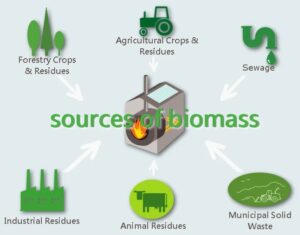
How to Implement Biomass Gasification in Small-Scale Applications?
Biomass gasification, a transformative process that converts organic materials into a valuable gas called syngas, has garnered attention as a sustainable and efficient energy solution. While large-scale applications are prevalent, the integration of biomass gasification in small-scale settings is gaining momentum. In this technical exploration, we’ll delve into the intricacies of implementing biomass gasification in small-scale applications, unlocking the potential for decentralized and environmentally friendly energy solutions.
Understanding Biomass Gasification
Before we embark on the journey of small-scale implementation, it’s essential to grasp the basics of biomass gasification. In this thermochemical procedure, biomass undergoes transformation, converting materials like wood chips, agricultural residues, or organic waste into a flammable gas recognized as syngas. Syngas, primarily composed of hydrogen, carbon monoxide, and methane, can be harnessed for electricity generation, heating, or even as a precursor for biofuel production.
The Appeal of Small-Scale Biomass Gasification
Small-scale biomass gasification holds several advantages, making it an attractive option for diverse applications:
- Decentralized Energy Production:
- Small-scale gasification allows for energy production at or near the point of use. This decentralization reduces transmission and distribution losses associated with centralized power plants.
- Community Empowerment:
- In rural or off-grid areas, small-scale gasification empowers communities to generate their own electricity or heat. This can be transformative for communities that lack access to a centralized power grid.
- Waste Utilization:
- Small-scale gasification provides an avenue for converting local organic waste, such as agricultural residues or wood scraps, into a valuable energy resource. This not only addresses waste management concerns but also contributes to sustainable energy practices.
- Flexibility and Adaptability:
- Small-scale systems are inherently more flexible and adaptable to varying energy demands. They can be easily scaled to match the specific needs of a community, business, or even a single household.
Steps to Implement Small-Scale Biomass Gasification
- Resource Assessment:
- Begin by assessing the locally available biomass resources. Identify the type and quantity of biomass that can be sustainably sourced in the region. This step is crucial for determining the feasibility of the gasification project.
- Technology Selection:
- Choose the appropriate gasification technology based on the characteristics of the biomass and the intended application. Common small-scale gasification technologies include updraft, downdraft, and cross draft gasifiers. Each has its advantages and is suitable for different feedstocks.
- System Sizing:
- Determine the size of the gasification system based on the energy needs of the application. This involves estimating the power or heat requirements and selecting a system that matches the anticipated demand.
- Feedstock Preparation:
- Prepare the chosen biomass feedstock for gasification. This may involve chipping, shredding, or drying, depending on the characteristics of the biomass and the gasification technology used.
- Gas Cleaning and Conditioning:
- Implement gas cleaning and conditioning systems to ensure the syngas meets the quality requirements for downstream applications. This step involves removing impurities such as tar, particulate matter, and moisture from the syngas.
- Power Generation or Heat Utilization:
- Depending on the intended application, set up the necessary equipment for power generation or heat utilization. This could involve the installation of internal combustion engines, gas turbines, or heat exchangers.
- Monitoring and Control Systems:
- Implement monitoring and control systems to ensure the efficient and safe operation of the gasification system. These systems can include sensors for temperature, pressure, and gas composition, as well as automated controls for optimal performance.
- Safety Measures:
. Prioritize sEmphasize safety by integrating precautions such as gas leak detection systems, implementing emergency shutdown protocols, and providing thorough training for personnel engaged in the operation and upkeep of the gasification system.
Case Studies: Small-Scale Biomass Gasification in Action
- Off-Grid Community in Southeast Asia:
A small-scale biomass gasification system was implemented in an off-grid community in Southeast Asia. By utilizing regionally accessible agricultural residues, the system delivered a dependable supply of electricity for residences, educational institutions, and community facilities. This not only improved the quality of life but also enhanced educational opportunities and community development.
- Small Business in Europe:
- A small business in Europe adopted biomass gasification to meet its heating needs. Wood waste generated by the business was gasified to produce heat for space heating and industrial processes. This not only reduced the business’s reliance on traditional heating fuels but also contributed to waste reduction and sustainability.
- Agricultural Operation in North America:
An agricultural operation in North America integrated a small-scale biomass gasification system to address energy needs for on-farm activities. By utilizing crop residues and organic waste, the farm achieved energy self-sufficiency, reducing dependence on external energy sources and lowering operational costs. The surplus energy generated was also used to power irrigation systems and contribute to the local grid, showcasing the versatility and community impact of small-scale gasification.
Challenges and Solutions in Small-Scale Implementation
While small-scale biomass gasification offers numerous benefits, it comes with its own set of challenges that need careful consideration:
- Feedstock Variability:
- Small-scale projects often rely on locally available biomass, which can be diverse and variable. Adapting the gasification system to handle different feedstocks requires careful engineering and monitoring.
- Technical Expertise:
- Operating and maintaining gasification systems demand a certain level of technical expertise. Providing training programs or partnering with organizations that offer support can address this challenge, ensuring the efficient and safe operation of the system.
- Economic Viability:
- Small-scale projects may face economic challenges due to upfront costs and the scale of energy production. Exploring financial incentives, grants, or community funding models can enhance the economic viability of small-scale gasification initiatives.
- Regulatory Compliance:
- Navigating regulatory frameworks, especially in regions with limited experience in biomass gasification, can be challenging. Engaging with regulatory authorities and seeking guidance can help ensure compliance with environmental and safety standards.
- Community Engagement:
- Successful small-scale implementation often requires community support and engagement. Educating and involving local communities in the project planning and execution phases can build acceptance and enthusiasm for the technology.
Future Trends in Small-Scale Biomass Gasification
As technological progress persists, numerous developments are influencing the future of small-scale biomass gasification:
- Modular and Scalable Systems:
- The development of modular and scalable gasification systems allows for easier deployment in diverse settings. These systems can be expanded or adapted based on changing energy needs, providing flexibility for various applications.
- Smart Technologies and Automation:
- Integration with smart technologies, such as the Internet of Things (IoT), enables real-time monitoring and automation of small-scale gasification systems. This trend enhances system efficiency, reliability, and ease of operation.
- Community-Centric Solutions:
- Future trends emphasize community-centric approaches, tailoring small-scale gasification solutions to the unique needs and resources of local communities. This includes addressing social, economic, and environmental aspects for holistic sustainability.
- Hybrid Energy Systems:
. Integrating small-scale biomass gasification with alternative renewable energy sources, like solar or wind, establishes hybrid energy systems.
- This approach enhances energy reliability and addresses intermittency issues associated with individual renewable sources.
Conclusion
Small-scale biomass gasification represents a beacon of sustainable energy solutions, offering communities and businesses the opportunity to harness the power of organic materials for their energy needs. Through careful planning, technical expertise, and community engagement, the implementation of small-scale gasification projects can unlock numerous benefits, from energy independence to waste reduction and community development.
As we traverse the changing terrain of energy technologies, the significance of small-scale biomass gasification’s role continues to grow. The synergy between local resources, technological advancements, and community participation paves the way for a decentralized, resilient, and environmentally friendly energy future.

